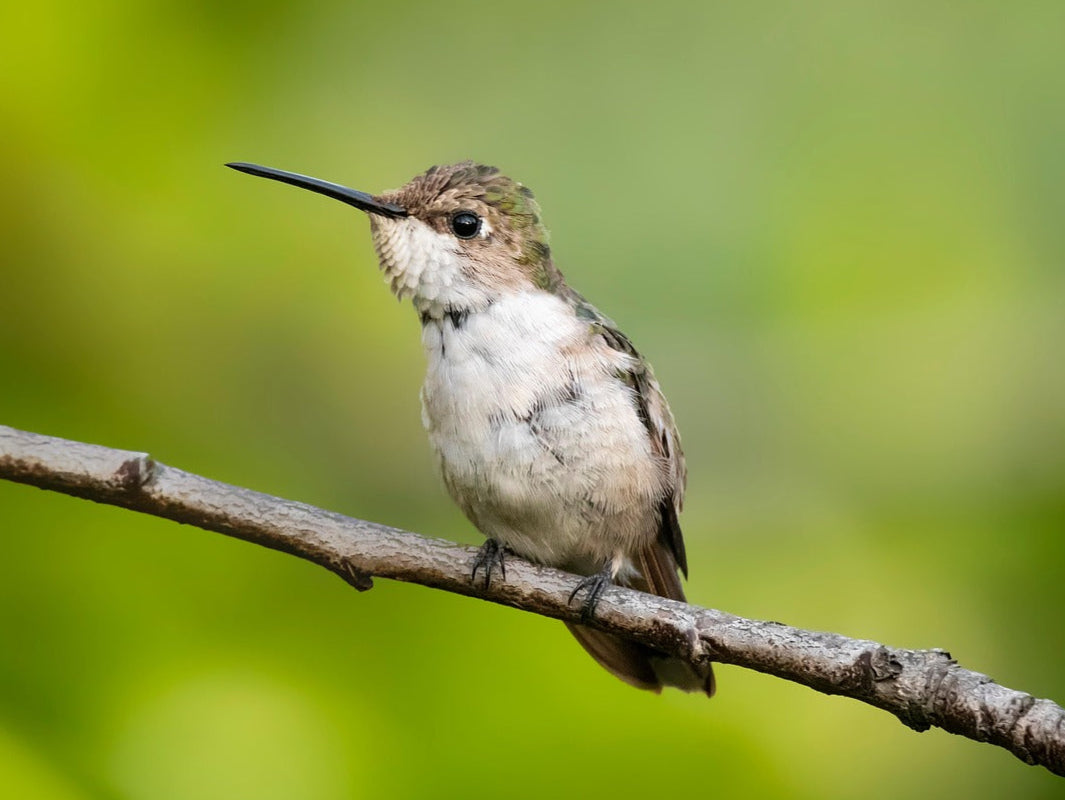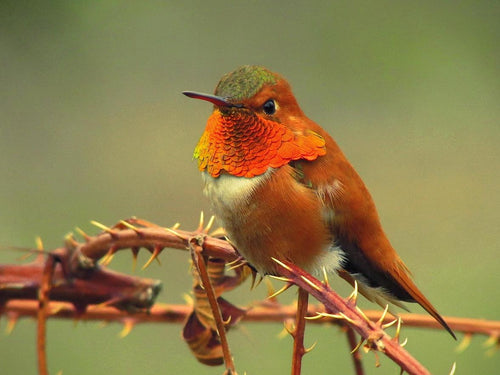Baby Hummingbirds: Everything You Need to Know About These Tiny Wonders
TTNatureTeam
Have you recently come across a baby hummingbird and felt awe at the tiny creature? Hummingbirds are already so small, making it even more surprising to see a baby in a nest. These incredible birds, with their fast wings and beauty, are fascinating. But what do you really know about them, especially when they are babies?
Keep reading to learn more about baby hummingbirds, including what they eat and their size.
How Do Baby Hummingbirds Come To Be?
Hummingbirds, like other bird species, hatch from eggs. But how do they get there? Well, it starts with the parents and their courtship and mating.
Male hummingbirds go to great lengths to find a mate and copulate to create a family. It's a strong desire that makes them dance and act in funny ways.
The first thing male hummingbirds do is migrate to warm territories. Where, however, it completely depends on the species. They migrate over 4,000 miles from their winter homes to their breeding grounds.
When the females are there, male hummingbirds take flight, diving in dramatic fashions to show off their agility, flying skills, and beautiful colors. This can take anywhere from hours to weeks. When they do get an interested partner, the actual mating takes just a few seconds. One quick touch and the mating is done.
Male hummingbirds don't stay for long. Instead, they try to woo other hummingbirds to spread their genes while female hummingbirds construct their nest and get ready for their eggs to hatch.
Hummingbird Nests

An important thing to note about baby hummingbirds is the nests they sit in before hatching. A hummingbird nest is small, only about an inch in diameter. It's bowl-shaped and takes a female hummingbird about a week to build with materials like leaves, moss, twigs, and spider silk.
Interestingly, hummingbirds are picky animals. They can take a while picking out the perfect spot to build and have their babies. Although the place can vary, most hummingbirds build nests in trees with a lot of cover near water on these branches.
Hummingbird Eggs
Now that we know a little more about hummingbird nests, let's dive into their eggs. A lot of this information, though, depends on the species and their health. In the Americas, there are 365 hummingbird species.
However, while true, most hummingbirds only lay two eggs per clutch. The eggs are tiny, weighing less than one-fiftieth of an ounce. Even the largest species lays tiny eggs. For instance, the Giant Hummingbird, which stops growing at nine inches, has eggs the size of a penny or smaller.
How Long Does It Take For Hummingbird Eggs to Hatch?
After a female hummingbird lays their eggs, it can take 15 to 18 days for them to hatch. Not all eggs will hatch at the same time, either. But before this, what do female hummingbirds do?
Female hummingbirds are very protective of their eggs and babies.
They spend most of the 15 to 18 days sitting on the eggs and keeping them protected from predators. She only leaves momentarily to eat, but doesn't stray far. Many predators seek out hummingbird eggs, including snakes, mammals, and other birds like crows and ravens.
Even when they are born, mama hummingbirds stay in the nests keeping their young warm as they are born featherless.
What Do Baby Hummingbirds Look Like?

Baby hummingbirds are not the prettiest things to look at. They are featherless, small, and almost alien-like. But also, it's normal not to know what they look like. Unlike other bird species, mama hummingbirds don't nest in open spaces, and the nests are so small it's hard to catch a glimpse inside.
While it depends on the species, many baby hummingbirds have dark, wrinkly skin and yellow-orange short beaks. They are blind for about nine days and completely rely on their mother. In short, they look nothing like their adult counterparts. But not for long!
Baby hummingbirds don't stay small for long, or at least that small. Instead, they are ready to leave their nest in just a month. By three weeks, they can see.
What Do Baby Hummingbirds Eat?
Moving on to food, baby hummingbirds eat whatever is provided. They completely rely on their mothers and what food they find while out hunting. Mama hummingbirds stay close to the nest and return multiple times throughout the day with food and protection for the little ones.
So, what does she feed them? The exact answer, like most in this article, depends on the species. However, hummingbirds mainly eat nectar from flowers and insects and bugs like caterpillars, mosquitoes, aphids, and spiders.
Instead of bringing her young live food, mama hummingbirds feed their young regurgitated food, which is a mix of nectar, vegetation, and insects. Since baby hummingbirds are blind up to about 9 days old, they feel when their mother returns based on the wind blowing in their direction. They then open their beaks wide and upright to accept the regurgitated food.
Baby hummingbirds are a handful and put mama hummingbirds to work. They need to eat at least every 20 to 30 minutes, meaning she's always out hunting.
How Long Do Baby Hummingbirds Stay in the Nest?
Baby hummingbirds don't stay young and helpless forever. After just three weeks old, they start growing feathers all over their bodies. They can also start flying at this age, although most stay until they are about a month old.
Fledglings, the name of young hummingbirds that have just started leaving the nest, don't fully leave their mother's care. Instead, this is when the mother hummingbird teaches them how to fly, hunt for insects, and find nectar properly.
What Do You Do If You See a Baby Hummingbird or Hummingbird Nest?
Most of the time, hummingbirds don't need your help. If you are lucky enough to see a hummingbird nest in your yard, leave it alone. It's okay to check on it from a distance periodically, but don't touch the eggs or nest. It's important to note that in the United States, touching, moving, or messing with a hummingbird nest is illegal.
Young hummingbirds, also known as fledglings, should also be left alone. Don't automatically assume that a hummingbird nest has been abandoned if you don't see the mother return quickly. As the baby hummingbirds get older, they need to eat less frequently. However, if you do suspect there is something wrong, call your local bird sanctuary or wildlife rescue.
FAQs
● How long does a baby hummingbird stay in the nest?
Baby hummingbirds stay in the nest until they are ready to fly. This is about 3 to 4 weeks, or until they grow their feathers.
● What does a 3 week old hummingbird look like?
Although newly hatched hummingbirds are grey, featherlss and blind, by 3 weeks old they have their feathers and adult colors. However, their tails are still short.
● How do mama hummingbirds feed their babies?
Mama hummingbirds feed their babies by hunting for food like insects and nectar and regurgitating the slightly digested mixture into their mouths.
Conclusion
Overall, baby hummingbirds are a joy to see. They are rare to notice because of how small both their nests and eggs are, but they are worth a quick check in your yard - just in case. These little ones don't stay that small forever. After hatching in a little over two weeks, they are fully mature in a month!
*Visuals courtesy of free image sources




